Are Squeaky Floors a Structural Problem?
Author: Omar Alonso | Editor: Omar Alonso
Review & Research: Jen Worst & Chris Miller
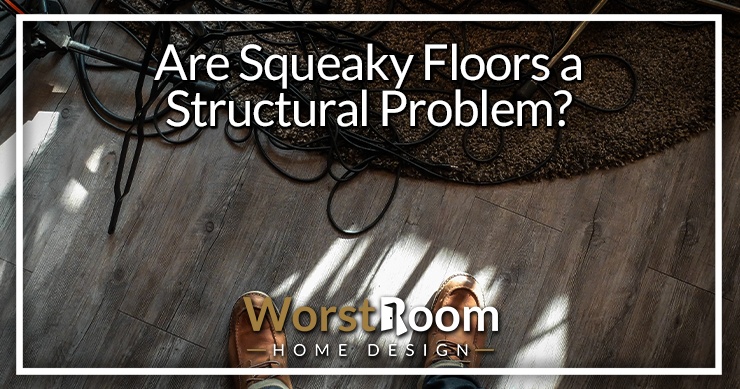
Is your hardwood floor squeaking as you make your way into the lounge? Squeaky wooden floors are a common problem, especially in older homes. But are squeaky floors a structural problem?
There are plenty of reasons why it could be happening. Sometimes it's nothing to worry about; it could be something as simple as a seasonal change causing the problem.
What Causes Squeaky Floors?
What causes floors to squeak? If you live in a cold region, you'll probably notice hardwood floors start squeaking during the winter. The cold weather outside makes the air in your home's interior dry. Since wood materials are sensitive to moisture, they begin to shrink due to the lack of humidity in the air.
When spring arrives, the air in your home returns to normal levels of relative humidity in the 55% to 60% range. As a result, the wood expands. Due to the colder, dryer conditions, the boards are looser on the subfloor than in the previous season.
This looseness is what causes the squeaking when you walk across the floor. If you notice squeaking in the spring, chances are it's nothing more than a humidity problem. Keeping a humidifier running during the winter usually prevents this problem. This is usually the cause of a squeaky metal bed frame, too. Humidity can cause a lot of various issues.
In some cases, squeaky floors may also be linked to hidden issues beneath your home. If your house has a crawl space, it’s wise to be aware of the signs of crawl space problems—such as musty odors, sagging floors, or visible mold. These could point to structural concerns that go beyond seasonal humidity changes and may require professional evaluation.
There are other possible causes that range from the very serious (rarely, but please check to make sure) to something as simple as a nail or screw being loose enough to allow a board to move up and down when you walk across it.
When Are Squeaky Floors a Structural Problem?
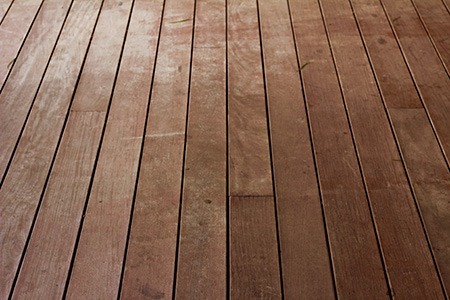
In other cases, you could have a real problem on your hands, indicating structural issues with your property. Are squeaky floors a problem? In some cases they can point to a bigger problem. If the squeak persists or worsens, it might be time to call a professional to check the structure, analyze the foundations, and locate the source of the problem.
When you face either of these situations in your house, the issue is likely to be moisture and changing air humidity rather than a structural issue. But again, you should have it investigated by a professional if it's not isolated to one or two boards.
This post unpacks everything you need to know about discerning whether you have a structural problem with your floors and home causing the issue. Let's look at those now.
A Problem with the Foundation
If the hardwood floors are squeaking, you might have a problem with the building's foundations. That's the worst-case scenario for homeowners. It signifies structural issues and potential damage creating a costly repair.
The foundation will shift, move, and settle over time. That's common in all houses and nothing to concern yourself over. Factors like moisture and expansive soil all determine the rate of shifting and settling.
However, if the settling rate is too much, it causes problems with the structure. For instance, if you're building a house in Arizona on compacted dry ground, you'll have less settling than building a home in Louisiana, where the soil is softer and moist.
The flooring and subflooring in your home don't always take kindly to the settling. If the foundation moves too much, it will cause structural problems with the flooring. The over-settling might cause issues like the nails pulling out of the boards, which causes creaking.
If the foundations don't settle evenly, the creaking is usually a sign of possible structural problems beyond a squeaky floor. Here are a few indications you have a deeper issue with the foundations and structure of your home.
- You feel movement in the floors of the pier and beam foundation when walking on them
- The home sits on clay soil
- There's a gap between the wall and the floor
- The floor is uneven, and the slope steadily increases over time
- The tiles start cracking
- You notice cracks in the corners of windows and doors
- There are stair-step and horizontal cracks in the brickwork
- The wallpaper wrinkles, and there's a crackling sound in the wall sheetrock
- The windows and doors start sticking
- The foundation walls (supporting walls) begin to bulge
- More parts of the floor start creaking over time
- The squeaking in the flooring keeps getting louder
If you detect any of these problems, you should have professionals come out as soon as you're able. This problem can and should be solved before it causes much larger (and more expensive) problems for you.
Damage to the Floor Joists
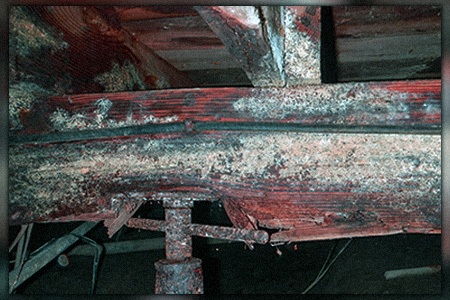
If you have uneven floor joists, it will result in creaking floorboards due to an uneven subfloor, especially with particle board subflooring. This effect causes the nails to loosen from the floor boards, creating a squeaking sound.
As you walk on the floor, the loose nails rub on the floorboards, or the floor joists rub on the subfloor, producing a squeaking sound. It drives you crazy, bothers your neighbors below you if you're in an apartment, and can even have you defending yourself against a frivolous noise complaint.
There may be cracking of the floor joists, causing the sound, and this effect may also loosen the nails in your subfloor. It can also be that the adhesive glue dried and broke loose underneath whatever types of laminate flooring you have, which is an easy fix.
Contractors typically block the floor joists to secure them, and if the blocking has poor workmanship, it results in the movement of the joists and the squeaking sound. It's common to see this in homes with multiple floors and crawlspaces.
No Acclimation of the Flooring to the Local Environment
The contractors installing the floor should leave the structure and work to acclimatize to the weather and environmental conditions for some time. If they're hasty with the process, the flooring moves and acclimatizes with the rest of the home, resulting in undesired shirking and expansion of the flooring, creating the squeak.
This can happen if the subfloor wood and the plywood and flooring planks above it are shipped in from a different state, for example, and are immediately installed without having had time to acclimatize. The changes in humidity and barometric pressure can cause wood to expand and contract.
Incorrect Installation of the Post-Tension Slab Foundation
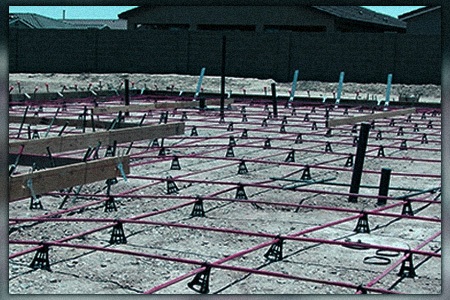
Most modern homes feature concrete foundations with post-tension slabs. If the slab post-tension cables aren't properly tightened, it creates issues with the foundation and flooring, creating a squeak.
Incorrect Installation of the Subfloor
Poorly installed subfloors usually have alignment issues. This misalignment creates spaces between the subfloor and floor, resulting in a squeak when you walk on it. Using proper subfloor screws to keep it all tight is one way to minimize this issue.
You Have a Pier & Beam Foundation
The flooring might squeak because you have a pier and beam foundation. This configuration is the most prone to movement when settling and creating squeaky floors. Generally, the action isn't going to cause a structural issue. In this case are squeaky floors a structural problem? No, but in time they could be a sign of a deeper issue.
However, this settling is enough to cause rubbing between the subfloor and floor, resulting in a squeak. The movement may also loosen the fasteners securing the floorboards. However, if you notice a sagging effect in the pier and beam foundation, you have a structural problem.
3 Simple Methods for Fixing Squeaky Floors
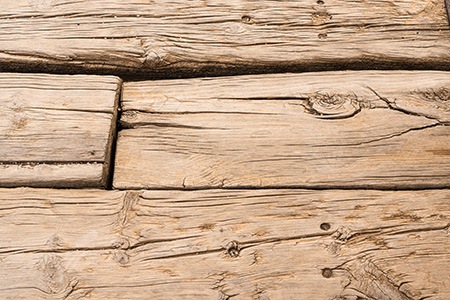
Now that you know what's causing the issue of a squeaky hardwood floor let's look at a few methods for fixing the problem. One of these hacks should help you alleviate the squeak.
If you have trouble finding the source of the squeak, have your partner or a friend walk around on the floor until you notice the locations causing the squeak. Go into the basement and locate the area underneath the floorboards.
Use WD-40 to Fill Cracks
WD-40 is a quick and effective solution to solving the issue of squeaky hardwood floors. Before you dump the whole can onto the flooring, it's important to note overuse of the lubricant can cause damage to the wood.
However, using a small squirt is usually a good quick fix to the problem in the affected area. The WD-40 removes the friction from the floorboards as they rub together, stopping the squeak. It can also remove friction between the wood and nails (screws should have been used!), too.
Expect the problem to return eventually as the WD-40 evaporates and is dissipated. This also won't stop the boards from moving around. Consider this a temporary fix.
Fill the Gap with Baby Powder or Powdered Graphite
Yes, you read that right. Baby powder isn't only for babies anymore. Apply the talcum to the affected area and let it settle between the floorboards. Powdered graphite works as a lubricant as well.
Like the WD-40, the talc removes the friction from the boards rubbing against each other, eliminating the squeak. It's a tool-less solution for solving the problem.
Fill the talcum powder into the cracks and sweep it in. The powder will settle between the gaps as you walk on the floorboards, removing the friction causing the squeak. Keep adding powder until you notice the squeak or popping sound subsiding.
Add Shims to the Floorboards
It's important to note the WD-40, and baby powder hacks only provide a temporary solution to the issue. You might get a season or two out of your work, but it won't give your home a lasting solution to the problem.
If you want a more permanent fix, you'll need to shim the floorboards to stop the movement. Locate the noisy part of the floor and go into the basement to find the problematic floorboard. Have your partner or friends walk around on the floor until you find the floorboard and shim it out with hardwood shims coated in wood glue so they don't slide out.
The shims fill the gap, preventing movement in the floorboards and stopping the squeak. It's a simple and effective solution. Also take the opportunity, if you can reach them, to tighten any nails or screws up.
However, this shim method won't work for second floors in double-story homes because you likely will need access to the subfloor to shim the floorboards. In that case, you'll have to live with the first two hacks or call a professional for repairs, or be willing to tear up the flooring to seek out the isolated squeaky spot.
FAQ's Surrounding the Squeaky Floor Problem
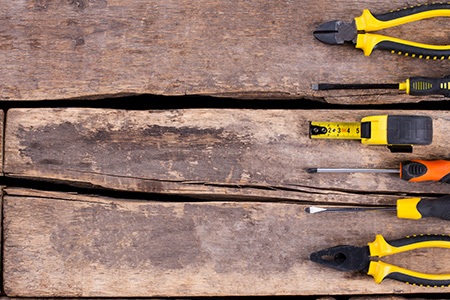
When people wonder "should I worry about squeaky floors" or "what causes floors to squeak", there's always a set of other questions that come up. Let's cover those now since more than one person is likely wondering.
Are Squeaky Floors Dangerous?
No, the squeaky floor isn't dangerous, but it could signify structural issues in your home that require significant costly repairs.
Why Do the Floors in the Second Story of My House Squeak?
Typically, the upstairs floors will squeak if there's a nail missing the joist during installation. This creates a gap in the flooring and subfloor, creating a squeak.
How Do I Stop My Floor From Squeaking or Reduce the Noise?
Our hacks for solving the problem involve spraying WD-40 into the crack, filling it with talcum powder to remove the friction causing the squeak, or to add wood shims to reduce the boards ability to move.
Are Squeaky Floors a Structural Problem? Rarely, But Check
Your floors could be squeaking for several reasons. In most cases, it's nothing to worry about, and a quick hack is all you need to solve the issue.
However, it might also signify deeper issues with your home's structure. So are squeaky floors a structural problem? Sometimes they can be indicative of a deeper problem. Call a professional to review the problem if you notice other signs of structural damage in your home.



